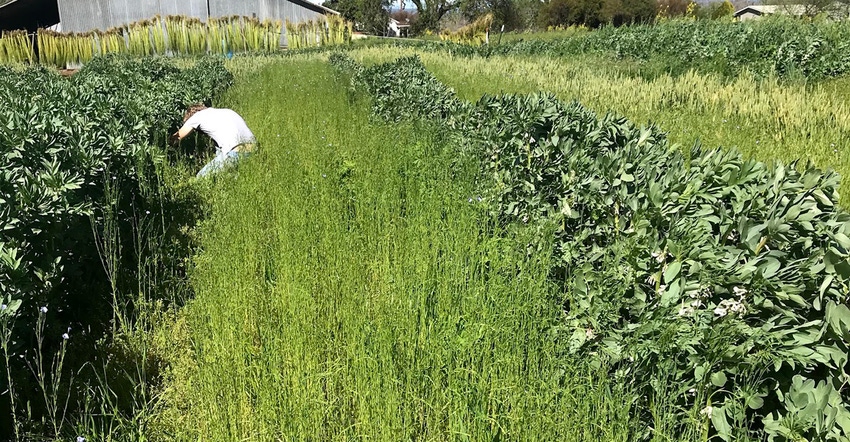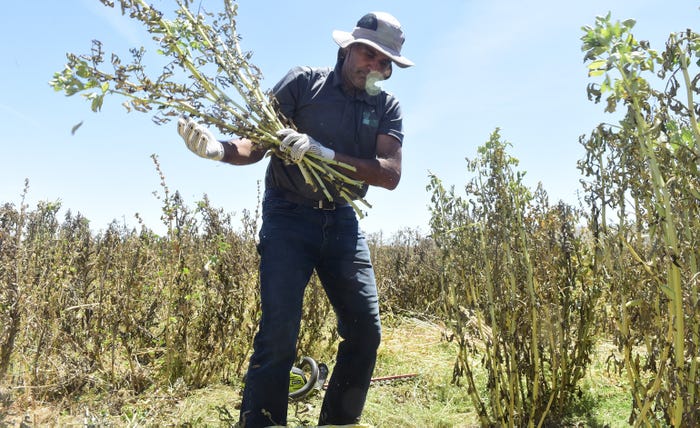August 24, 2020

Your crop rotation is built on several assumptions regarding income, need for crops and market potential. But is it time to shake it up? There are crops that are newer to the U.S. market that may offer the potential for higher returns, and they can rotate with commodities including alfalfa, wheat and barley.
One such crop is fava, or faba, beans. U.S. farmers began to rase fava beans as a cover crop, recognizing its use as livestock feed and fodder. But there's a growing human consumption market for this broad bean. Is it right for your farm?
The fava bean is a legume that fixes atmospheric nitrogen in the soil. It’s a high-yielding pulse crop that can boost yield for succeeding crops in the rotation. Native to the Mediterranean region, fava beans are grown in a wide range of climates as a summer or winter crop. It is a cool-season crop that responds well to irrigation and ample precipitation.
Fava seedlings tolerate frost, which allows it to be planted as soon as soil conditions permit for an early-maturing crop. In the U.S., fava beans are grown as a summer grain crop in Northern states, and as a winter cover crop in other regions. In 2019, it is estimated that North Dakota farmers planted 7,000 acres of fava beans — compared to 31,500 acres in Alberta, Canada.
 CROP HARVEST: Hossein Zakeri harvests fava beans at California State University, Fresno (Fresno State). The crop shows promise as a high-value choice for a rotation in the West.
CROP HARVEST: Hossein Zakeri harvests fava beans at California State University, Fresno (Fresno State). The crop shows promise as a high-value choice for a rotation in the West.

Fava bean’s protein-rich, edible seeds can be grown for both human consumption (dry beans and fractionation), and as livestock feed or fodder. Markets for human consumption, such as for plant-based protein products, require good crop management to produce high-quality beans. In addition to its dry grain, a niche market in the U.S. exists for fresh-pod fava beans; these young fava beans may be eaten pod and all.
1 crop, 2 roles
California State University, Chico (Chico State), studies how fava bean offers dual value: both cover crop and cash crop. “We’re in the second year of our study,” explains Hossein Zakeri, a Chico State assistant professor of agriculture, “and continue to test how many times we can harvest high-quality fresh pods for human consumption, before the cover crop is incorporated into the soil. Our first-year data shows that fava bean can produce over 20,000 pounds of fresh pods from April to May in Northern California. We’re also quantifying the nitrogen fixation and nitrogen benefits of fava bean cover crop in various cropping systems such as almond and walnut orchards, rice land, fiber flax and vegetable crops.
Fresh-pod fava beans are common in Hispanic and Mediterranean cuisines. To test the U.S. fresh-pod market, Zakeri and his colleague Kyle Brasier work with chefs to develop fresh-pod recipes familiar to the American palate, such as falafel, hummus, pizza crust and veggie burgers. The team planned to evaluate consumer preference for fresh pod dishes at farmers markets, though COVID-19 is delaying this portion of their research.
Growing fava bean will reduce input costs by adding nitrogen to the soil and diversifying farm income through its flexible market options for both human consumption and livestock feed. “What I am impressed by,” Zakeri says, “is the diversity of uses for this crop, and its hardiness.”
Market development will be needed to open more opportunities for fava beans, but it offers possibilities as a rotational crop with new market potential.
Hemken writes from Lander, Wyo.
About the Author(s)
You May Also Like




